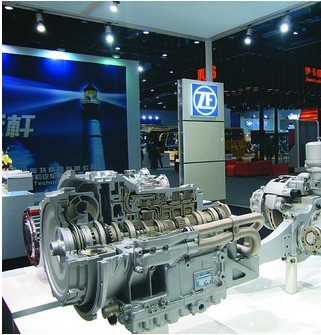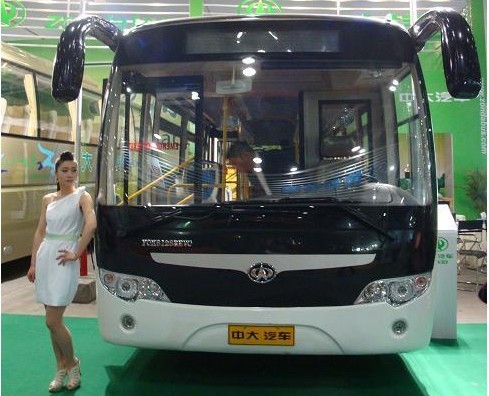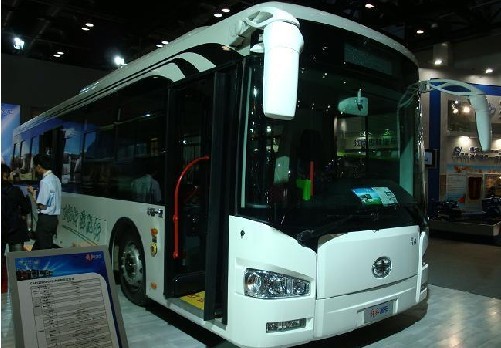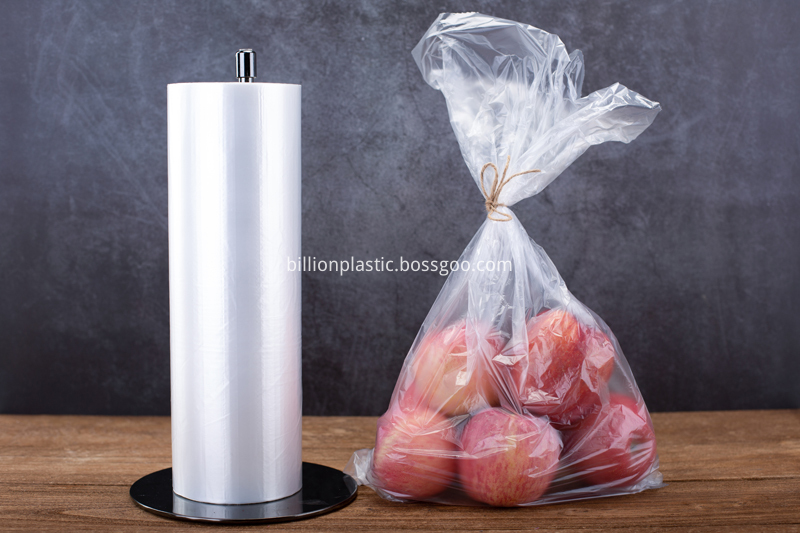Passenger car industry adopts motor integrated transmission and simplification to replace the traditional transmission
2021-10-25 01:05:13
From May 12th to 14th, 2011, the Beijing International Road Transport, Urban Public Transport Vehicles and Components Exhibition was held at the Beijing National Convention Center. Many bus companies exhibited their own pure electric and hybrid new energy buses. At the conference, it was discovered that some pure electric buses canceled the traditional transmission and used motor direct control to change the speed of the vehicle.

The number of gearboxes allocated by the Ministry for the distribution of traditional transmissions of pure electric passenger cars has also been greatly reduced. The conventional passenger car has changed from 5th and 6th gears to 2nd and 3rd gears. The traditional transmissions have gradually disappeared on new energy buses.
Motor integrated transmission replaces traditional transmission
With the development of battery technology, electric vehicles have become a strategic direction for the development of automobiles. At the Beijing Bus Show, eight passenger car companies including FAW, Foton, Zhongda and Changlong launched eight pure electric buses. Compared with traditional fuel buses, the transmissions of these eight pure electric vehicles have undergone tremendous changes. Traditional transmissions have gradually been replaced or weakened.

8 models of pure electric buses have 4 models that directly use motor-controlled speed change. The 4 models of pure electric buses exhibited by 4 companies, including Shenlong, Zhongda, Changlong and China South Locomotive, are controlled by a motor. In these show cars, people can no longer see the traditional transmission, they use electronic torque control technology to directly control the wheel speed, to achieve the control of the vehicle speed. The motor-driven transmission simplifies the structure of the transmission of the pure electric passenger car to a certain extent, and the operation is more convenient. The other 4 pure electric passenger cars are equipped with traditional transmissions, but they have obvious changes compared to the transmissions on the fuel vehicles of the same exhibition. The prominent feature is that the transmission gears are simplified from the traditional 5th gear, 6th gear to 2nd gear, 3 block.

The installation of transmissions on electric buses is mainly to solve the problem of insufficient motor driving force. Mounting the transmission can change the motor torque and increase the motor power. The refinement of the transmission gear is no longer the focus of the electric bus. The transmission gears on most electric buses have been reduced. The CA6120VRBEV21 models on display at FAW-Bus used the 2-speed automatic transmission developed by FAW. The KLQ6129GHEV model on display at Suzhou Jinlong Haige is equipped with a 3-speed mechanical automatic transmission. Electric vehicles to promote the automotive industry to change, but also will promote changes in components such as transmissions.
Motor-integrated gear changes are regarded by companies
The weakening of conventional transmissions on pure electric buses has brought about changes in the transmission technology of passenger cars to a certain extent. At the 2011 international advanced automatic transmission technology seminar held during the 2011 Shanghai Auto Show, some experts suggested that intelligent control of motor integration enables electric vehicles to travel at variable speed without the need of a transmission, greatly simplifying the structure of the vehicle's transmission and reducing the cost of the vehicle. While major automobile and transmission manufacturers are developing electric bus technology, they have also increased their research on motor control and transmission technology.

Compared with 2-speed and 3-speed transmissions, the integrated control of motor speeds has advantages. The integrated motor speed change allows the motor to directly drive the rear axle to perform vehicle drive speed change. Compared to a pure electric passenger car equipped with a conventional transmission, the motor-controlled speed change vehicle has the advantages of low noise, low failure rate, and high efficiency. Due to the cancellation of the transmission, passenger car costs are greatly reduced. After entering the era of electric cars, traditional transmissions may be replaced by motor-controlled transmission technologies.
At this stage, due to the problems such as the lack of power output in the motor speed change, the motor control speed can not be promoted in all electric buses. At present, the motor control transmission technology can only be used on passenger vehicles with small tonnage. However, in large-tonnage passenger vehicles, the motor directly controls the transmission power is not enough. It is necessary to install a 2 or 3 speed transmission to change the output torque of the motor. Motor power. However, motor-driven variable speed will become the development trend of pure electric buses.
Hybrid buses demand higher transmissions
Compared with the decline of traditional transmissions on pure electric buses, the hybrid buses displayed at the Beijing Bus Show have higher requirements for traditional transmissions.
Compared to pure electric passenger cars, hybrid buses consist of two power systems, which require both the control of the engine and the control of the electric motor. This makes hybrid buses more demanding on transmissions.

The hybrid buses exhibited by four bus companies of Foton Motors, Golden Dragon Motors, Youth Autos, and China South Locomotive Group have significantly increased the technological content of transmissions compared to single-fuel buses. Futian's BJ6123PHEVA-2 hybrid city bus is an Eaton F0-8406A 6 mechanical automatic transmission. The hybrid city bus displayed at the Youth Car uses the imported Allison automatic transmission. The hybrid bus XMQ6127GHEV4 exhibited by Golden Dragon Motor is a 6-speed AMT transmission. With the development of hybrid buses, new requirements may constantly be put on the transmission.
Flat Bags on Roll is commonly used in every industry, such as electronically products, accessories,household, cosmetic, commodity, stationery, toy, fruits,vegetable and food products etc. Specially in packing of fresh fruits, fresh vegetables, meat, seafood, cakes,chocolates, candy, cookies,biscuits and so on.
The bags could be in big roll for industry and supermarket or in small or for household.

Flat Poly Bags,Flat Plastic Bags,Flat Polypropylene Bags,Flat Poly Bags On Rolls,Roll Bags,Plastic Roll Bags,Freezer Bag Rolls
BILLION PLASTIC MANUFACTURING CO.,LTD, JIANGMEN , https://www.jmtshirtbag.com